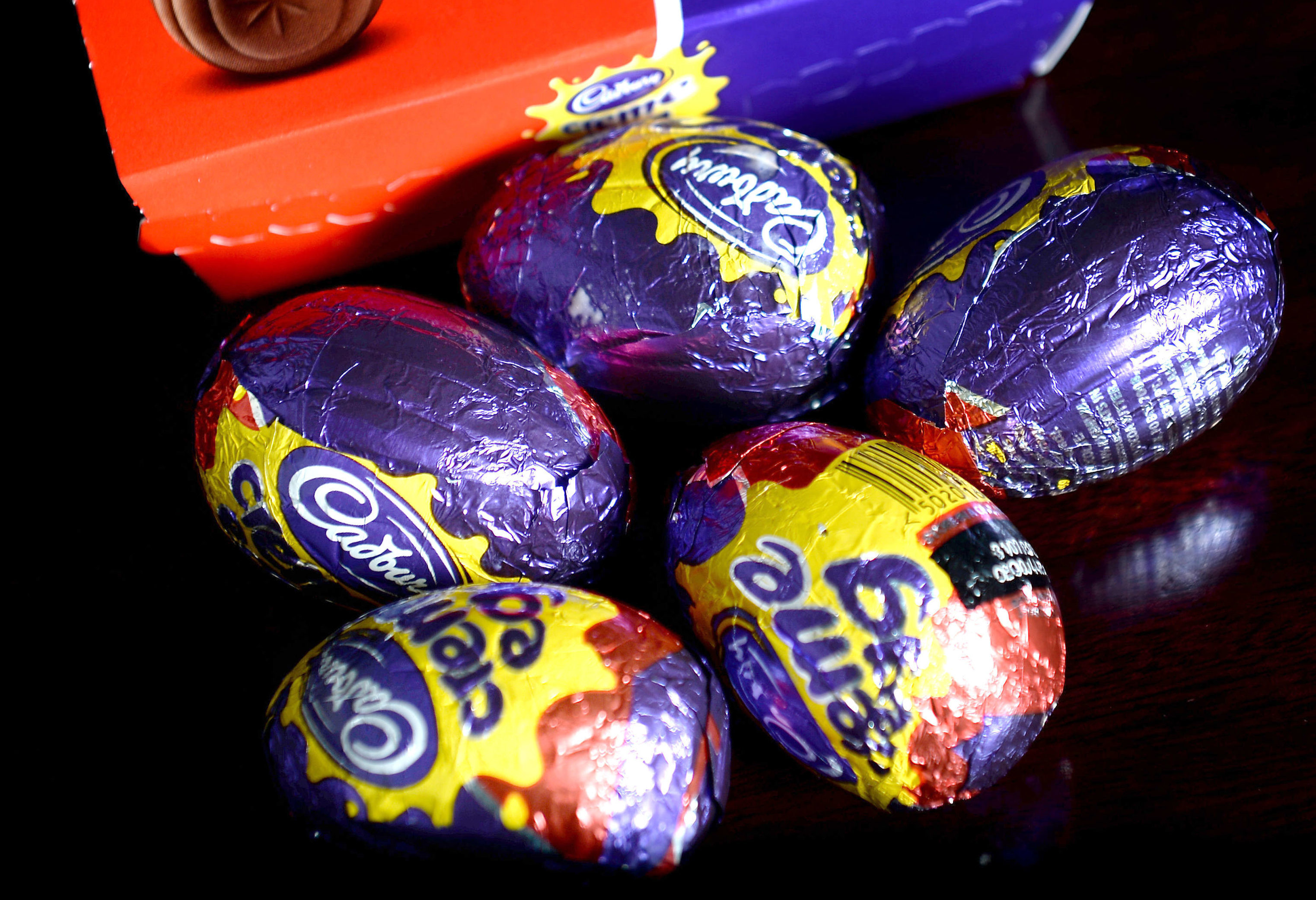
ADVERTS for Cadbury eggs and Chewits and Squashies sweets have been banned for breaking new rules prohibiting the advertising of junk food to children.
The rulings by the Advertising Standards Authority (ASA) are the first to result from a ban on campaigns for products high in fat, salt or sugar (HFSS) across all children’s media – including online and social – introduced in July last year.
They come as the ASA’s sister organisation, the Committee of Advertising Practice, launches a “12 months on” review of the impact of the rules, which will monitor media popular with children for age-restricted ads.
The ASA banned ads on Cadbury’s website for a storybook titled The Tale Of The Great Easter Bunny, written by pop singer Frankie Bridge and featuring children hunting for Easter eggs coloured the same purple as the company’s branding, and an activity pack featuring an image of a rabbit holding a Cadbury-branded purple egg.
It also banned four posts on the Chewits Facebook page about Chewie the Chewitsaurus celebrating GCSE results, going back to school, Roald Dahl Day and International School Libraries Month.
The “advergame” app Squashies World, in which players match pairs of Squashies by flicking them towards each other, must no longer appear.
The ASA told Mondelez UK, trading as Cadbury, Chewits manufacturer Cloetta and Swizzels Matlow, which makes Squashies, to ensure that ads for HFSS products are not directed at under-16s.
The watchdog has made it clear to advertisers that it is not enough for them to filter out users who have told social media platforms they are under 16, on the grounds that some children enter false dates of birth.
Instead, advertisers need to show they have used targeting tools to direct ads away from users whose interests suggest they are younger than they claim.
The ASA did not uphold complaints against YouTube star Zoella or Pointless Blog, run by her partner Alfie Deyes, for posting ads for the confectionery brand Ferrero on social media after finding that the company had taken reasonable steps to target their ads appropriately, taking into account data showing that only a small proportion of Zoella and Pointless Blogs’s audience were under 16.
It also did not uphold complaints involving two paid-for Instagram posts for Walkers Max Strong crisps, which also featured bottles of alcohol, after finding that the company had taken sufficient care to ensure they were not directed at under-16s or under-18s respectively.
ASA chief executive Guy Parker said: “The ban on HFSS ads in children’s online media is working, but it’s important that we enforce it rigorously.
“These rulings show that we’re doing that and will help advertisers understand where we’re drawing the line.”
Obesity Health Alliance lead Caroline Cerny said: “Whilst today’s rulings should be celebrated, the complaints demonstrate the blatant ways in which the food and drink industry attempts to exploit loopholes in the rules.
“We knew that these rules would be difficult to monitor, and the fact that children continue to be exposed to various junk food marketing techniques proves us right.”
Swizzels managing director Jeremy Dee said the company’s app was not designed to appeal to children and did not “in any way” encourage the consumption of sweets.
He said: “Like others in our industry and beyond, we support efforts to develop a more robust age gate. The ASA ruling highlights the need for us to collectively address this industry challenge.”
A Mondelez spokeswoman said: “We will be taking the insights and views provided by the ASA as part of this ruling and applying those learnings to our future content so we can continue to build upon our longstanding commitment to not market directly to children under the age of 16.”
Last month the Government proposed a 9pm watershed for advertising unhealthy products as part of the second chapter of its childhood obesity strategy.

Enjoy the convenience of having The Sunday Post delivered as a digital ePaper straight to your smartphone, tablet or computer.
Subscribe for only £5.49 a month and enjoy all the benefits of the printed paper as a digital replica.
Subscribe